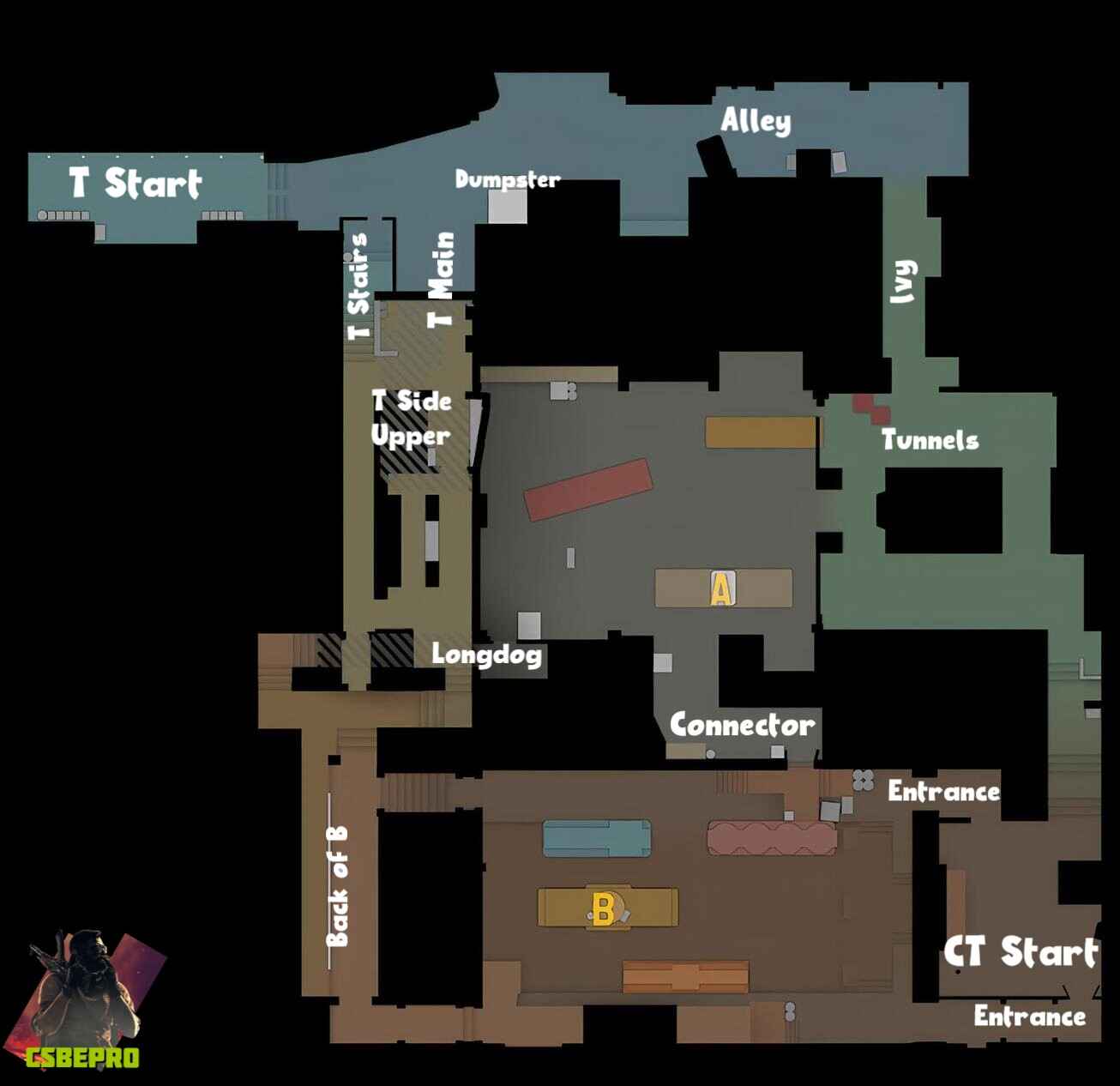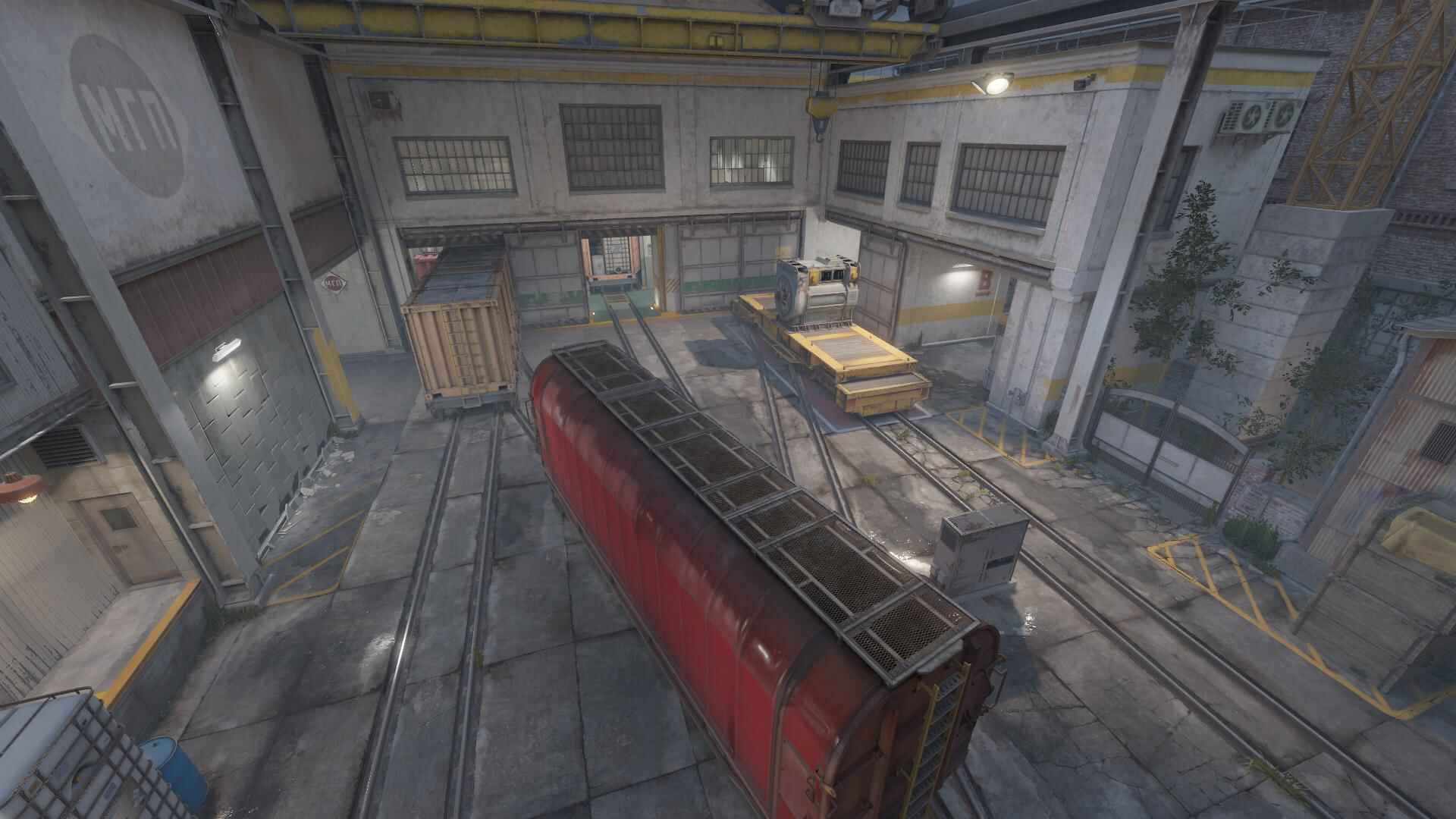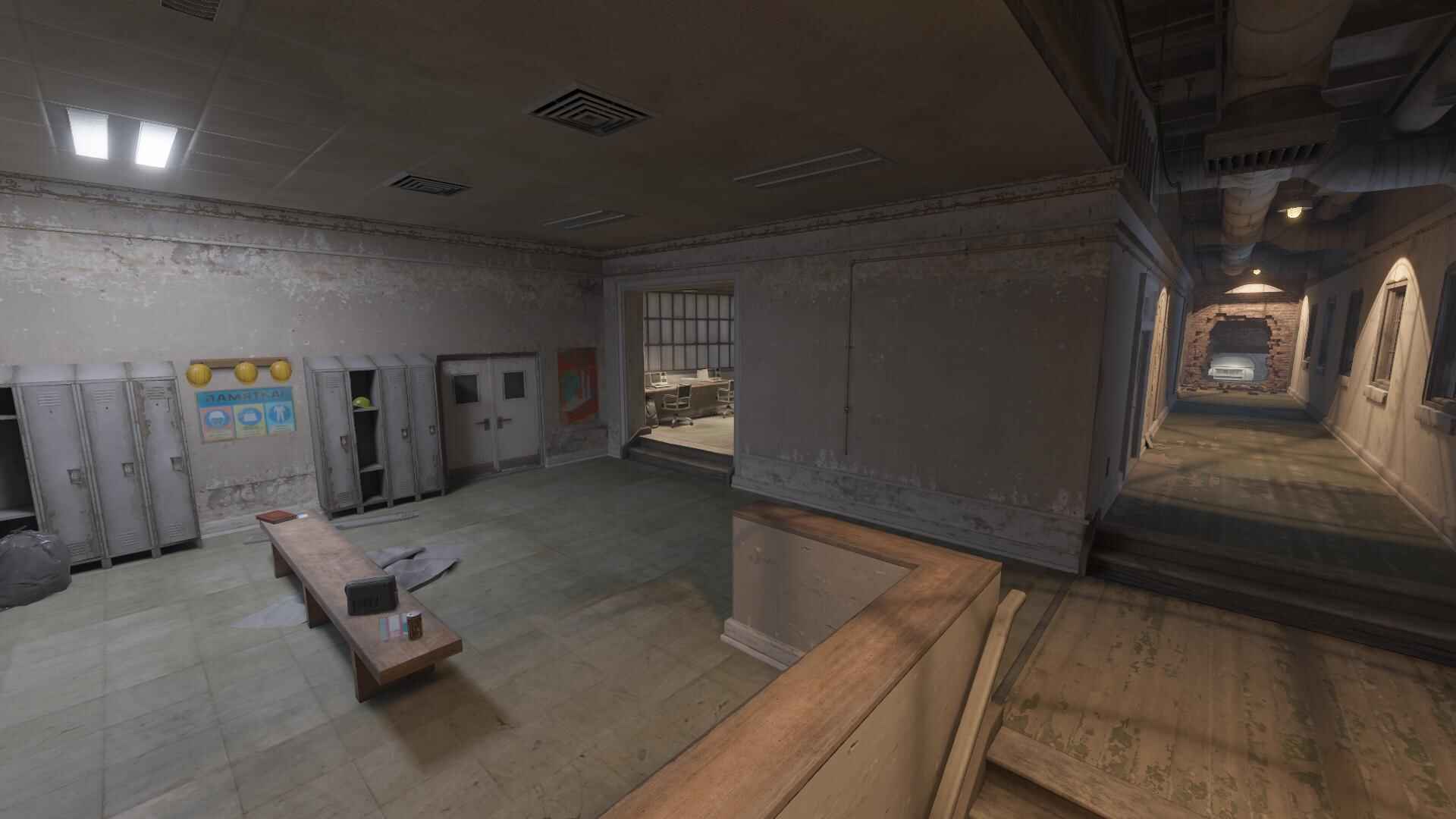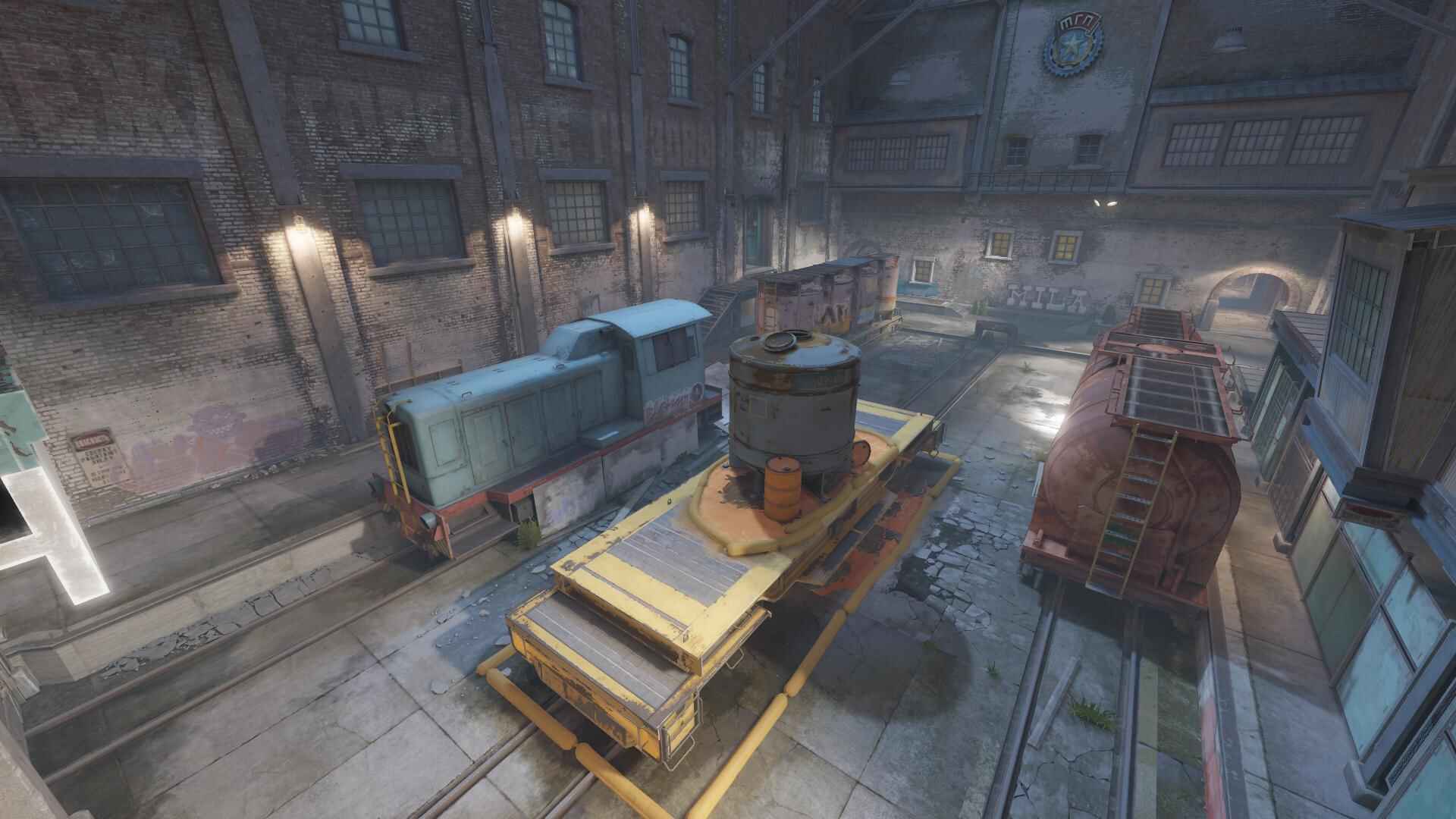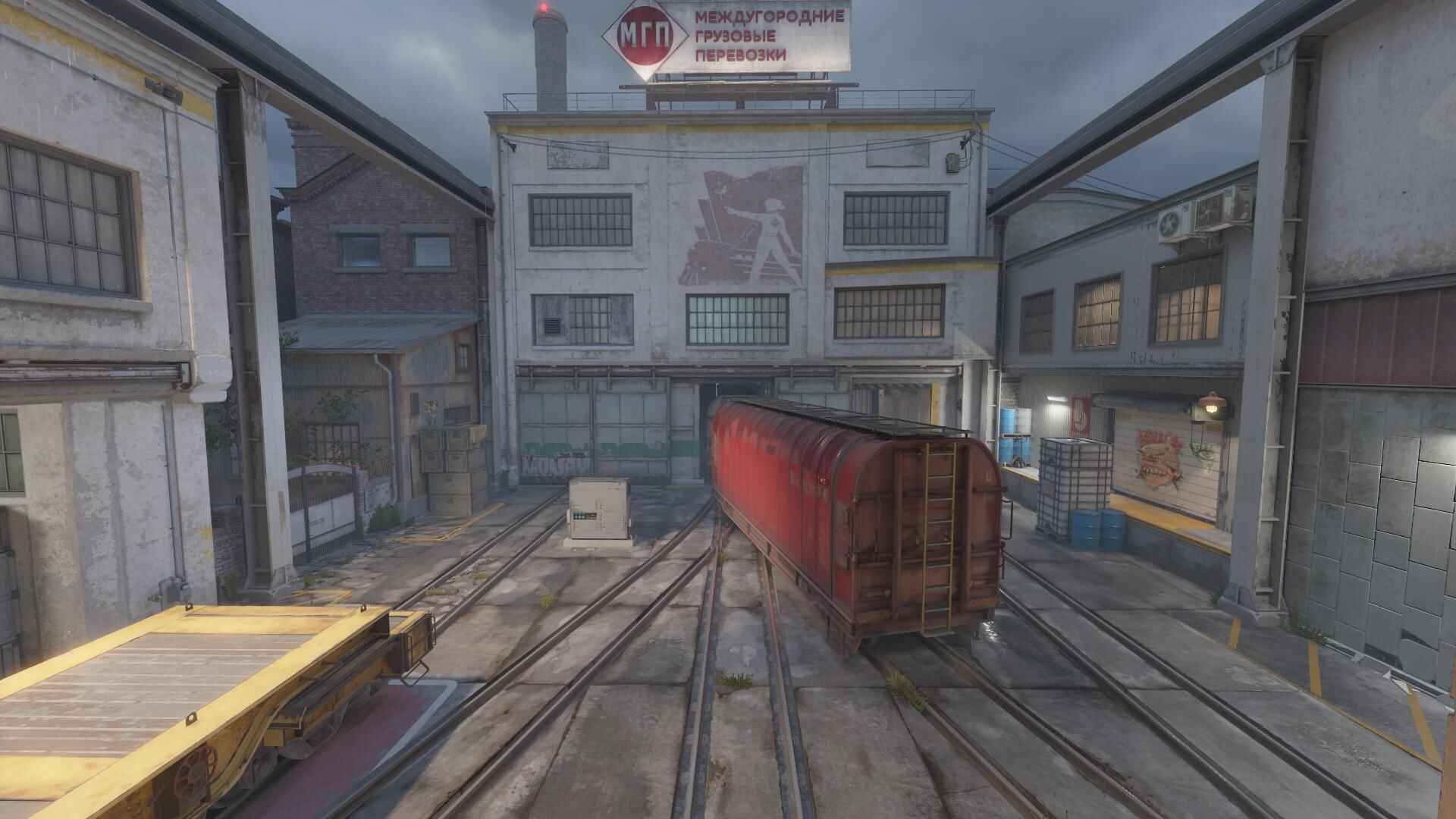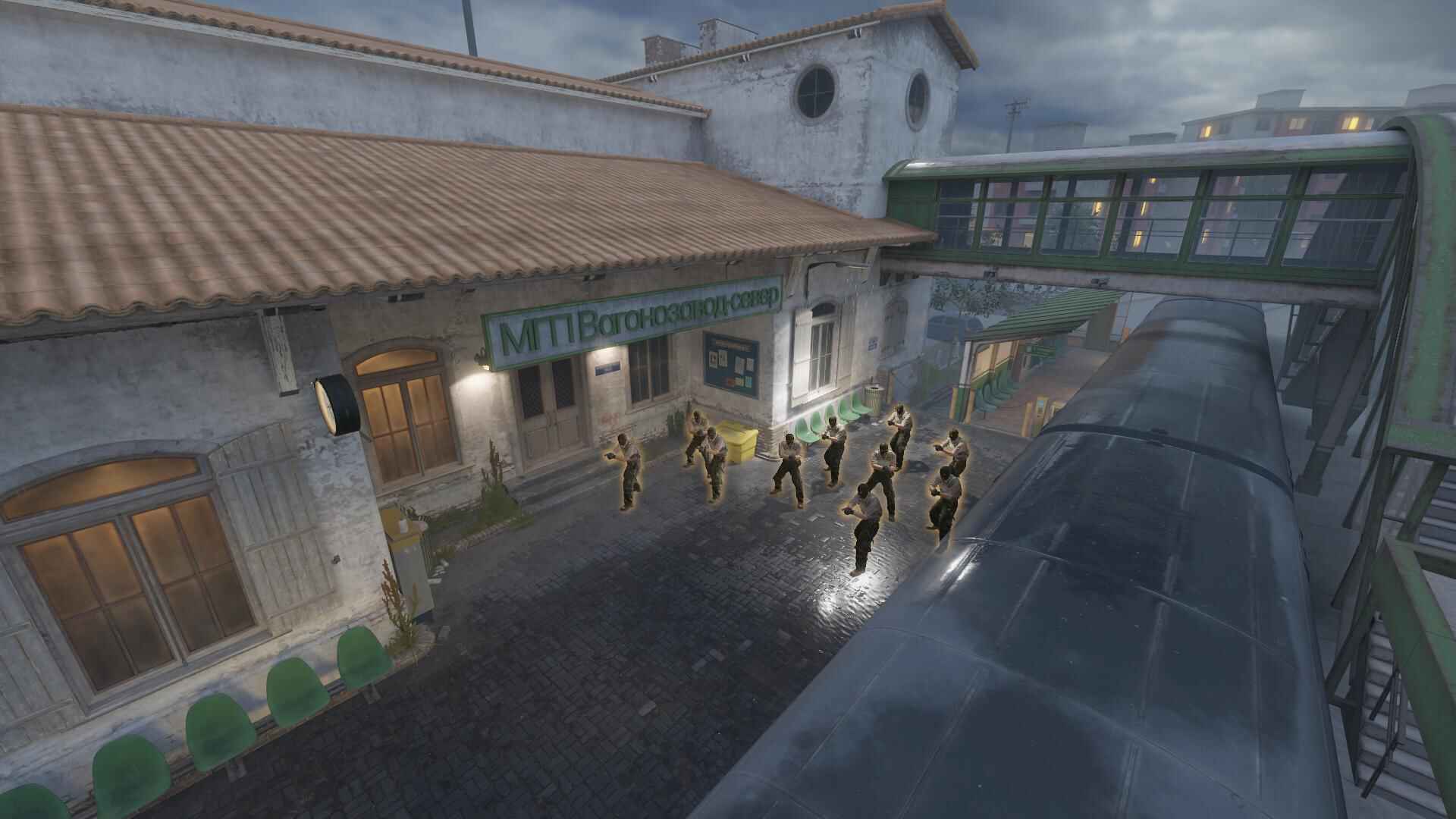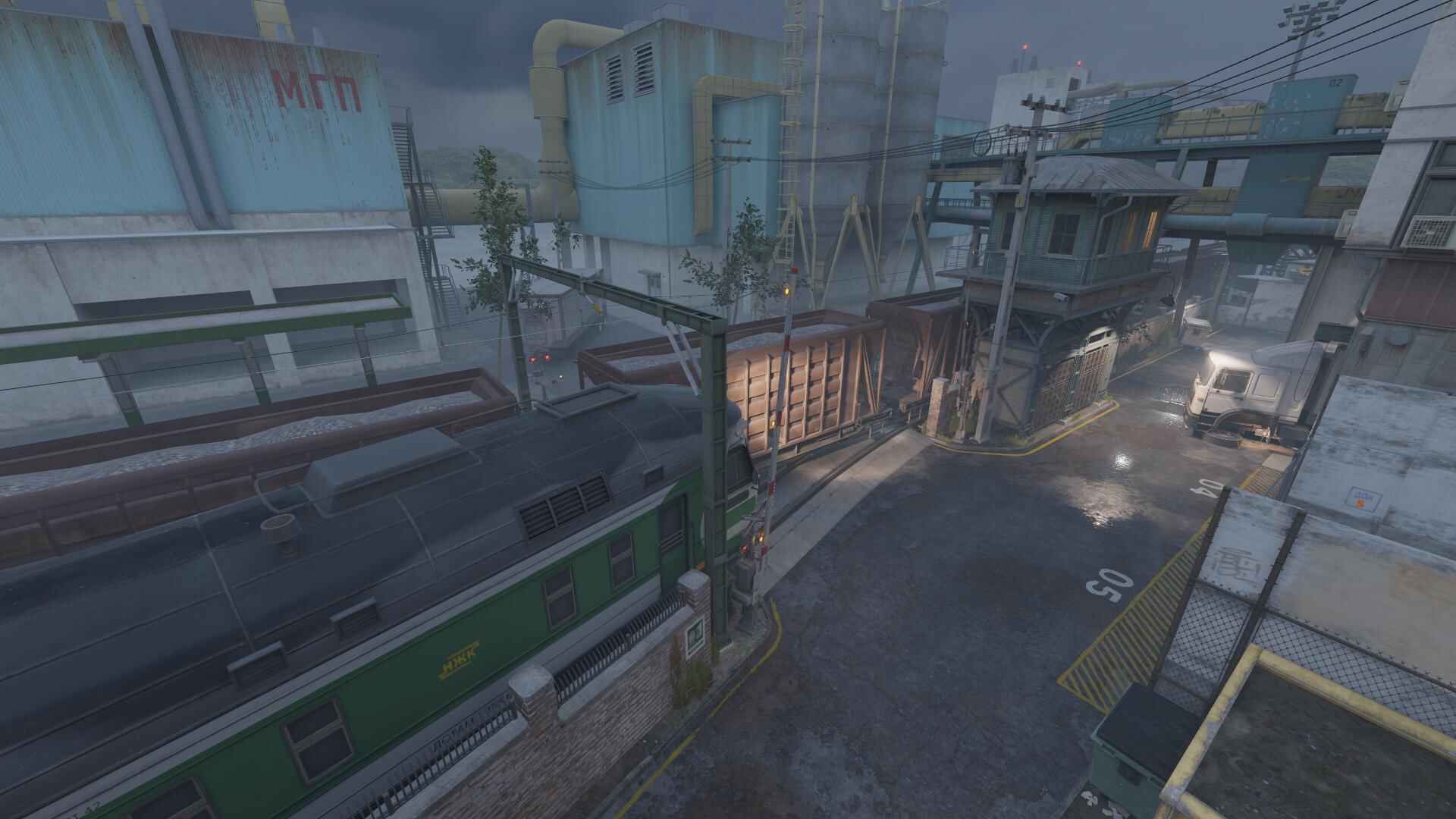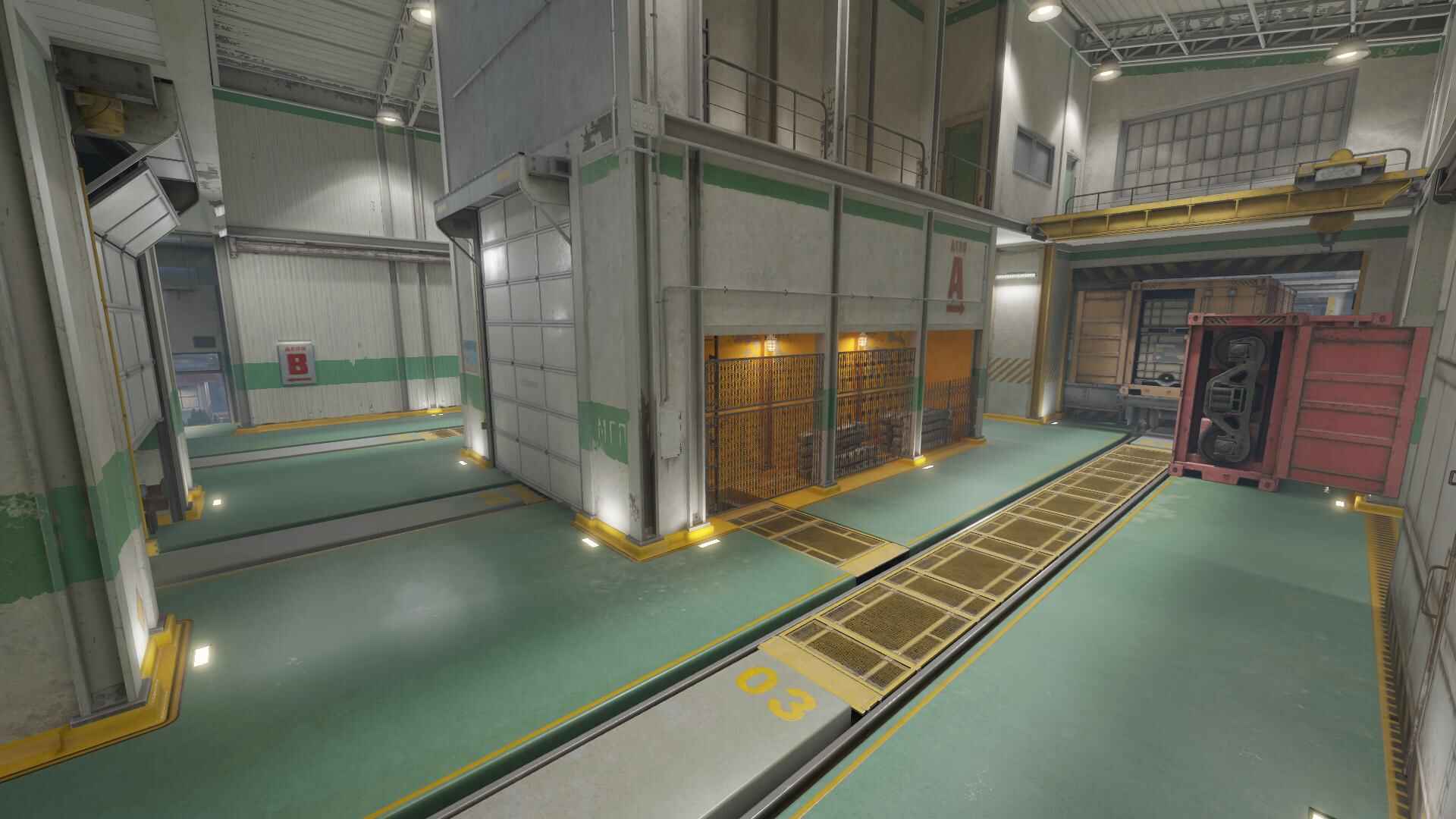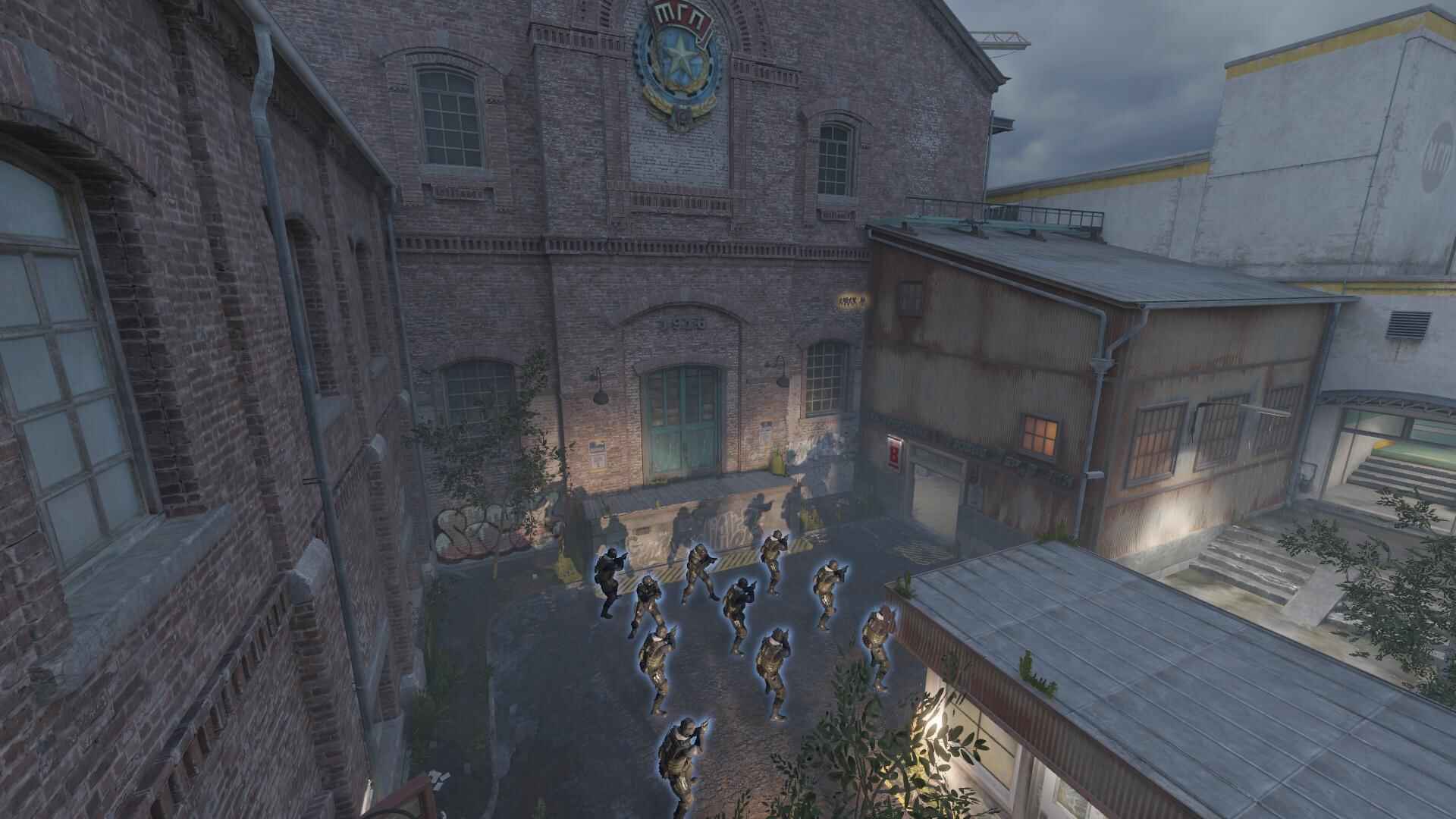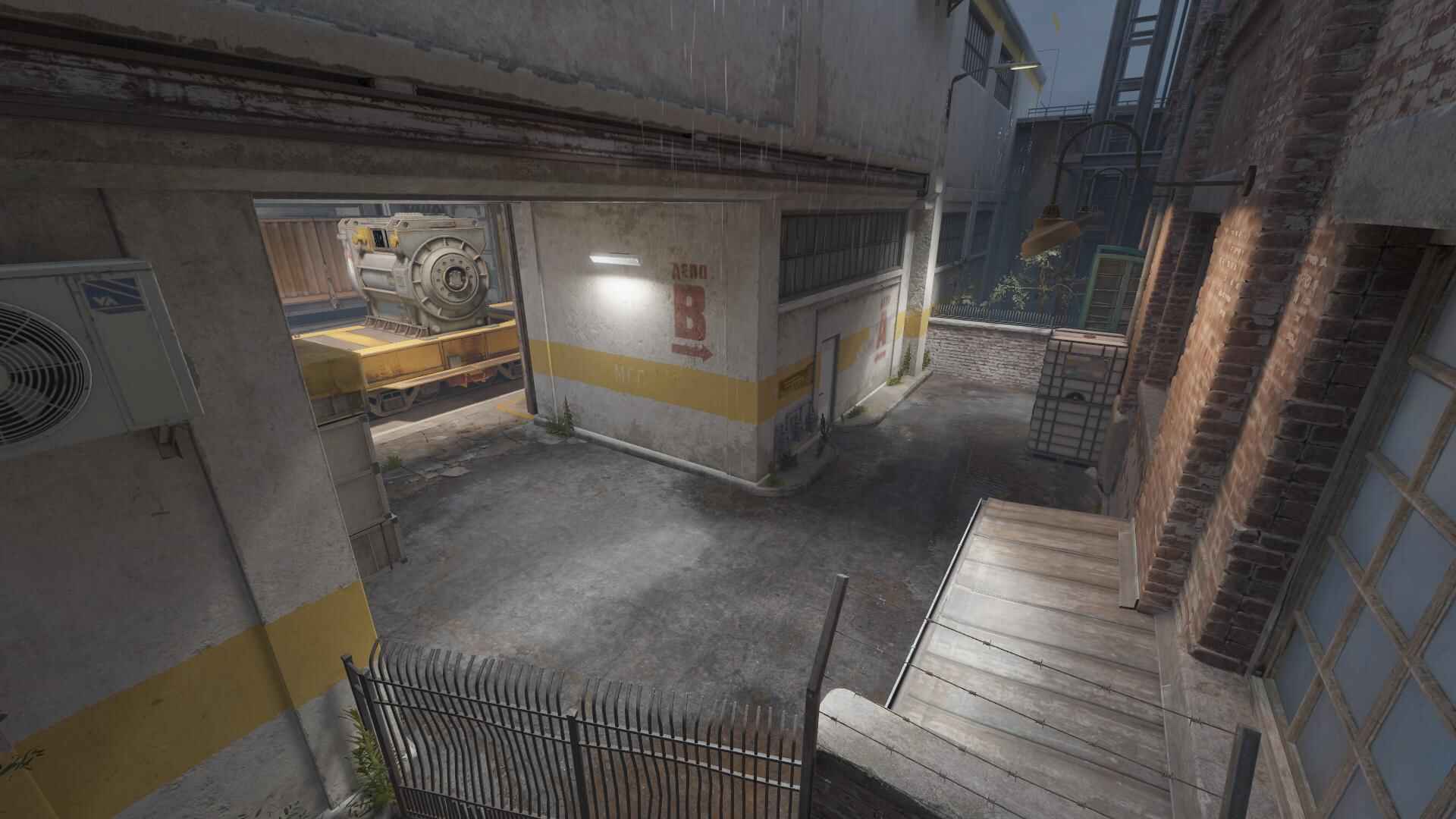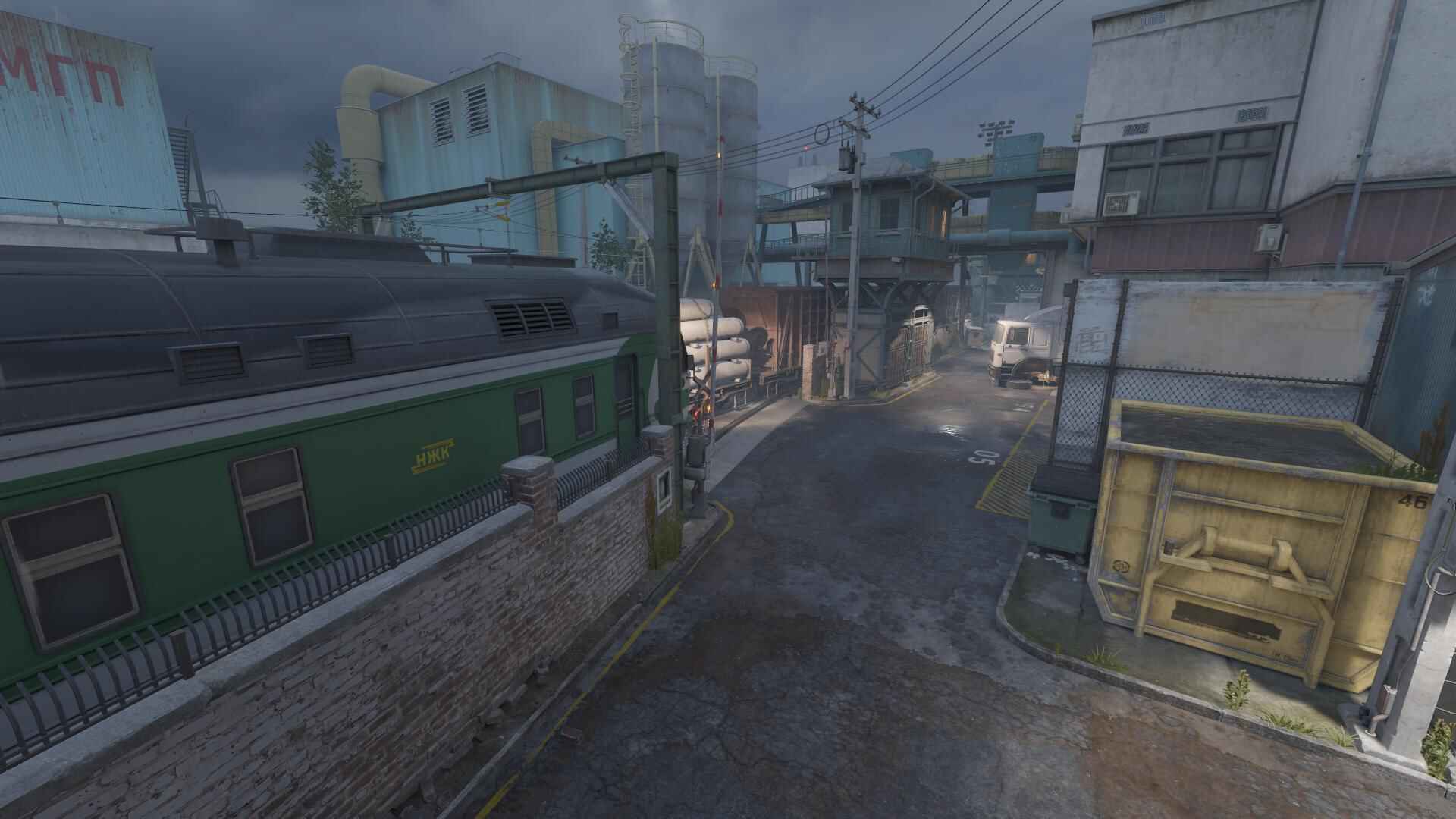Home » Counter-Strike 2 » TRAIN
10/11
TRAIN
Train is one of the most iconic maps in Counter-Strike history, making a return in Counter-Strike 2 with refined graphics and gameplay elements. This guide provides a complete overview of the Train map, covering strategies, key locations, callouts, and tips to win your matches.
Overview
The Train map is a bomb-defusal map set in an industrial railway yard, offering a mix of open spaces and tight corridors that cater to both long-range battles and close-quarters skirmishes. The map is defined by its long sightlines, multiple vertical elements, and narrow choke points, making positioning and map control crucial for both teams.
The two bomb sites, A and B, are situated in relatively open areas, but the presence of numerous train cars creates complex angles and valuable cover for both attackers and defenders. A Site is particularly exposed, with multiple entry points from Ivy, Popdog, and A Main. Executing a successful attack here requires precise coordination and well-placed utility, as defenders can take advantage of elevated positions and off-angles to shut down advances.
On the defensive side, Counter-Terrorists must strike a balance between aggression and passive play to maintain control without overextending. Meanwhile, Terrorists need to rely on well-timed smokes and flashes to break through the defense effectively.
Train rewards strategic play, teamwork, and efficient utility usage, making it a favorite among teams that excel in coordinated executions and retakes.
About
- Map Type: Bomb-defusal
- Faction Terrorist: Phoenix Connexion, Eastern Europe
- Faction Counter-Terrorist: SAS (Special Air Service), UK
- Location: Morocco
- Release Year: 2001
- Map code: de_dust2
Logo
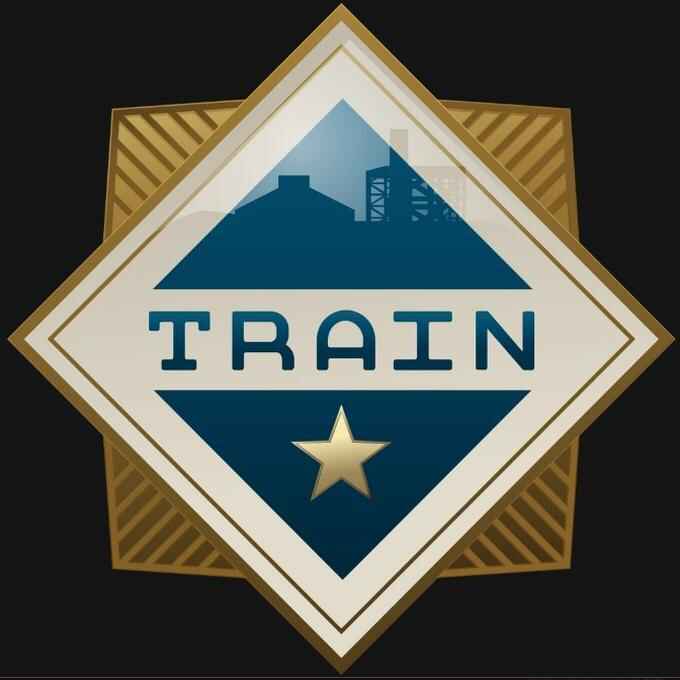
Train Map Callouts
Understanding the callouts on Train is essential for effective team communication. Here are the primary locations:
T Start – The spawn area for the Terrorist team at the beginning of each round.
Dumpster – A small area near T Start that can be used for cover.
T Stairs – A staircase leading from T Start toward the T Main area.
T Main – A primary entrance for the Terrorists leading towards the A Site.
T Side Upper – An elevated position near T Spawn, commonly used for controlling the area leading toward B.
Longdog – A corridor leading toward the B Site, often used for strategic rotations.
Ivy – A long narrow pathway leading to A Site, useful for flanking or executing split strategies.
Tunnels – A passage connecting different parts of the map, useful for sneaky plays.
Alley – A side route near Ivy that can be used to reposition.
Connector – A key rotation point connecting the A and B Sites.
Back of B – An area behind the B Site, often used for holding defensive angles.
Entrance – A doorway near CT Spawn leading to A Site or rotations.
CT Start – The spawn point for Counter-Terrorists at the start of the round.
Tactical Strategies
Terrorist Side
As a Terrorist on Train, your primary objective is to gain control of key areas and execute strategic attacks on either bombsite. One effective strategy is the Ivy Split, where players take control of Ivy and use it to launch a pincer attack on A Site, forcing defenders to fight on multiple fronts. Another approach is the Fast B Rush, which relies on overwhelming the B Site defenders with sheer speed, catching them off guard before they can deploy utility or rotate reinforcements. A more methodical strategy is Default Play, where the team spreads out across the map to gather information, pick off defenders, and slowly establish control before deciding on the final execution. This approach allows for adaptability, making it easier to exploit defensive weaknesses. Lastly, Popdog Control is a crucial tactic that involves securing the Popdog area to open up opportunities for a stronger A Site execute. By controlling this space, Terrorists can cut off defender rotations and create pressure from multiple angles, making it harder for Counter-Terrorists to hold their positions effectively. Combining these strategies with well-coordinated utility usage and precise teamwork can significantly increase the chances of a successful bomb plant and round win.
Counter-Terrorist Side
On the Train map, counter-terrorists need to prioritize both map control and communication to effectively neutralize enemy threats. By controlling key choke points such as the “lvy” and the “T Main”, CTs can limit the terrorists’ ability to maneuver and plant the bomb. Coordinated rotations between bombsites are essential, allowing teammates to support each other and cover blind spots. Maintaining an aggressive but cautious posture helps in catching opponents off guard while minimizing exposure to crossfires. Utilizing utility like smokes and flashes can slow down enemy advances and force predictable engagements. Constant information sharing about enemy positions is crucial to adjust strategies in real time.
Tips
Train map requires a blend of strategic positioning and quick reflexes to secure victories. Learning every train car layout and identifying high-traffic choke points can give you an edge over opponents. Utilize effective communication with your team to share enemy positions and coordinate rotations. Timing the use of utility such as smokes and flashes can disrupt enemy advances and secure safe passage through tight corridors. Lastly, practice reading your opponents’ movements and adjust your tactics dynamically to maintain control throughout the game.
Conclusion
Train in Counter-Strike 2 remains a tactical battleground requiring precision, teamwork, and utility mastery. Whether you’re a Terrorist executing a well-planned attack or a Counter-Terrorist holding angles, understanding the map’s layout and strategies will give you a competitive edge. Keep practicing your callouts, grenades, and aim to become a formidable player on Train.
